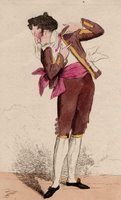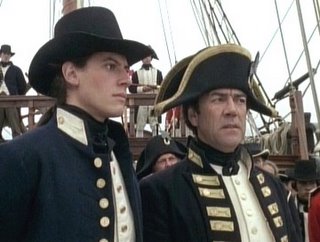 I do big chunks of writing on Saturday afternoons. That’s when the Metropolitan Opera broadcasts live, and I find it interesting that opera, or the human voice, helps me write. Most of the music I listen to when I write is vocal, for reasons I can’t quite fathom–sure, opera has all that passion and over-the-top emotion, and it’s all about love, jealousy, revenge, murder, and dying twice in a sack.
I do big chunks of writing on Saturday afternoons. That’s when the Metropolitan Opera broadcasts live, and I find it interesting that opera, or the human voice, helps me write. Most of the music I listen to when I write is vocal, for reasons I can’t quite fathom–sure, opera has all that passion and over-the-top emotion, and it’s all about love, jealousy, revenge, murder, and dying twice in a sack.
I find, too, that real, hardcore opera fans are rather like trad regency fans in their enthusiasm and encyclopaedic knowledge. Just listen to the half-time, sorry, intermission quiz at the Met, where a panel of experts answer opera trivia questions.
So what was a visit to the opera like in the regency period? First, you got value for money. An evening at the opera was l-o-n-g, though not in the sense of Ring Cycle long. It wasn’t entirely about the music, although people cared passionately about particular singers and might pause in their card-playing, drinking, or socializing to listen to a popular aria. Then as now, operas featured fabulous costumes and great sets and stage effects.
The major London theater for opera was The King’s Theatre, Haymarket, renamed Her Majesty’s Theatre (its current name) in 1837 when Victoria came to the throne. Like most historic London theaters, it burned down regularly during its history, and the Regency-era version, the second on the site, opened in 1791. It was the venue for the London premiers of many of Mozart’s operas.

A popular star was Giuseppe Naldi, seen here as Figaro in The Marriage of Figaro, which made its London debut in 1812 (although the opera had had an amateur performance in 1810 and its tunes were already well known–the Coldstream Guards had adopted Non piu andrai, one of the opera’s greatest hits, as its slow march in 1787). Naldi, not apparently a terrific singer but popular for his acting and warm personality, was something of a Mozart comic specialist, appearing as Leporello in Don Giovanni (which debuted at the King’s Theatre in 1816) and Papageno in The Magic Flute.

Sadly the King’s Theatre burned down again in 1867, but the Royal Opera Arcade, built behind the theater by John Nash and George Reston in 1816-1818 still survives.
But back to my original topic. What do you like to listen to when you write, or read? Do you have books you associate with particular music? Favorite London theaters, operas, great performances…?







